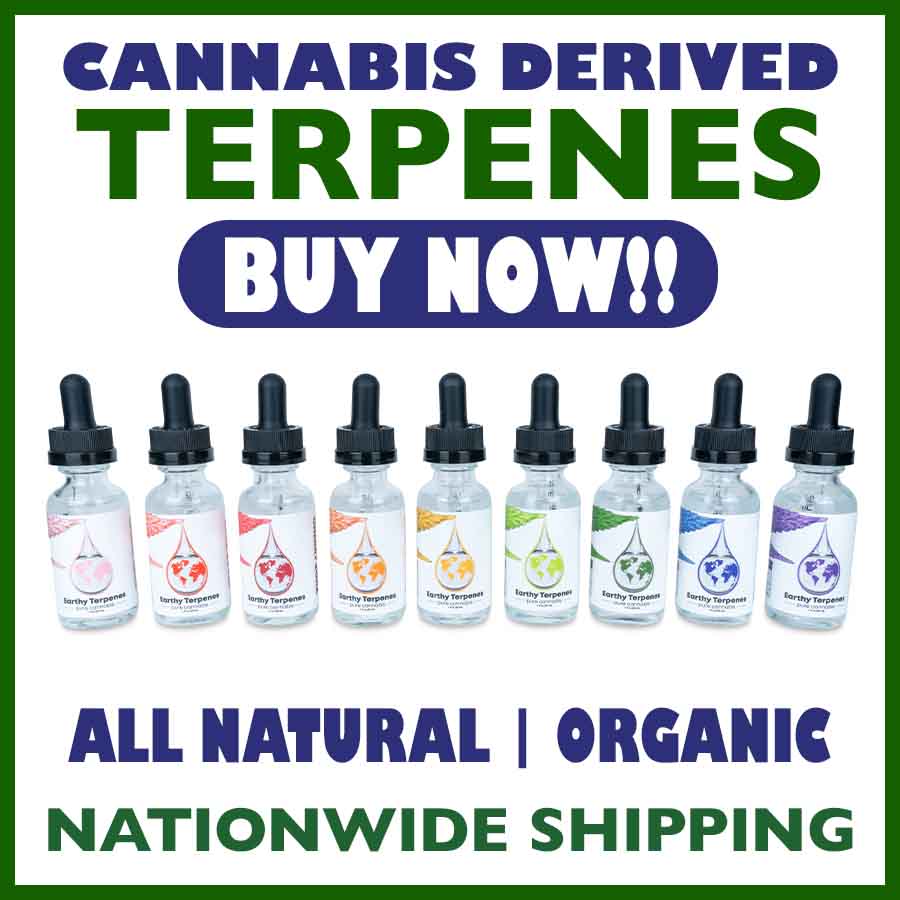Though it may sound like an alien planet in a sci-fi movie, 3-carene is a very terrestrial plant compound with much to offer humans. You may drink this sweet, tantalizing terpene in your morning orange juice, chew it in a cannabis gummy, or smell it as you pluck basil from your garden. Whatever the vehicle, there’s no denying the lure of its sweet and pungent odor.
Here, we’ll explore what makes this curious terpene so interesting and beneficial. Read on to find out how it is used, where it comes from, which cannabis plant strains carry high levels or trace amounts of it, and other fun facts that will help demystify its many features.
What are terpenes?
Terpenes are the aromatic hydrocarbons in botanical essential oils that affect how a plant smells and tastes, and are found in many plant species. In natural environments, terpenes may serve as insecticides by protecting plants and repelling predatory insects with their scent. For this reason, terpenes such as beta-pinene and terpinolene are sometimes extracted from essential oil and used in insecticides.
Pests like aphids, which can be destructive to cannabis crops, steer clear of strains high in ocimene the same way mosquitos flee from certain varieties of geraniums [1].
On the other hand, other terpenes attract pollinators to help a plant species survive. Moreover, terpenes can affect animal behavior. Honeybee colonies, for example, use the scent of eucalyptol and ocimene to regulate their foraging practices and social organization [2].
A host plant species with chemical composition including ocimene or eucalyptol can act as bumblebee pheromones and assist in the pollination of angiosperm plant species [3].
Terpenes are now ubiquitous in manufacturing. They’re used as food and beverage additives, flavoring agents, and combined with other chemicals to make household products, cosmetics, and wellness goods.
What is 3-carene?
3-carene, sometimes referred to as Delta-3-carene, conveys an odor that is best described as a combination of sweet pine trees, musky earth, and damp woodlands. Besides cannabis, it is a naturally occurring component produced by plants such as rosemary, cedar, basil, and some coniferous trees [4].
It has a molecular weight of 136.24, according to the National Institute of Standards and Technology [5].
How is 3-carene used?
Cannabis consumers enjoy 3-carene for its nectar-like smell and its rumored ability to promote clarity as part of the entourage effect [7]. Other potential benefits of the terpene are currently being studied.
As a natural constituent of turpentine, 3-carene is a popular ingredient in industrial insecticides and substances in the cosmetics and perfume industries. Additionally, it is utilized as a food additive for flavoring and preserving, a plastic agent, and an agent in pharmaceuticals. Gum turpentine and concentrated oils of juniper are notably high in 3-carene and used with other chemicals to create industrial agents [6].
Effects of 3-carene
One of the most pronounced effects associated with 3-carene is its role as a drying agent [8].
The cosmetics industry uses 3-carene in some products to draw out oil and other liquid materials. This drying quality makes 3-carene a powerful ingredient in wellness products [9]. Its earthy aroma profile can be found in different cultivars and different strains.
Cannabis strains high in 3-carene
3 carene is one of the top 20 cannabis-derived terpenes, although not prevalent in all cannabis strains. Here are a few that boast a higher concentration.
Lifter – An award-winning, Sativa-dominant strain from Oregon CBD, Lifter comes from crossing SH 50 (Special Sauce x New World Haze) and Early Resin Berry (ERB). The combination of terpenes from these parent strains creates a funky, sweet mix that hits the palate with a balance of bitterness.
Sour Special – This Indica-dominant strain from Oregon CBD results from pairing Special Sauce with GG#4 Conversion. The strain is woody and fruity, spicy and sour with astringent berries, plus notes of sour, dank earth.
Cherry Soda – A robust Indica-dominant hybrid strain with large buds and heavy trichomes, originating from California’s Ventura Seed Company, Cherry Soda’s profile is true to the cherry name in flavor and aroma, alongside spicy sweetness and the presence of fresh citrus notes.
What is the entourage effect?
Originally proposed in 1999, the entourage effect describes a mechanism by which the physical properties of a given strain other species of cannabis, such aromatic compounds such as terpenes and flavonoids, act synergistically with cannabinoids to modulate the overall effects of the plant, whether those may be mood-altering or boosting [11].
Sources of 3-carene
Besides cannabis, 3-carene is present in other plants, such as:
- basil
- bell peppers
- rosemary
- fir needles
- juniper oil
- cypress [12]
Wrap-up
The next time you find yourself chopping basil, bell pepper, or rosemary to add to your dinner, know that 3-carene is on the menu. This ambitious, delicious terpene is sure to make your entrée extra pungent while also serving to dry your eyes when you cut the onions. Check out Earthy’s Sour Lifter Terpenes!
Medical Disclaimer / Legal Disclaimer – Information is provided for educational purposes. It does not and is not intended to constitute legal advice or medical advice. We attempt to be accurate and up-to-date, but the legality of cannabinoids and the science of cannabis are evolving. The author is neither a legal professional nor a medical expert. Before buying or using any products, you should check with your local authorities and medical providers.
References
- Leafly: Benefits of Ocimene Terpene
- Larval Pheromone beta-Ocimine Regulates Foraging in Honey Bees
- Compositions Comprimising Eucalyptol and Ocimine for use as Bee Pheromone
- Wikipedia: 3-Carene
- National Institute of Technology: 3-Carene
- Turpentine Derivatives: Delta-3-Carene-95
- Wikipedia: Entourage Effect
- Abraxas Labs: Delta-3-Carene
- Understanding Terpenes: Delta-3-Carene
- Concentrations of Delta-3-Carene in Mice
- Wikipedia: Entourage Effect
- Terpene Spotlight: Understanding Delta-3-Carene






